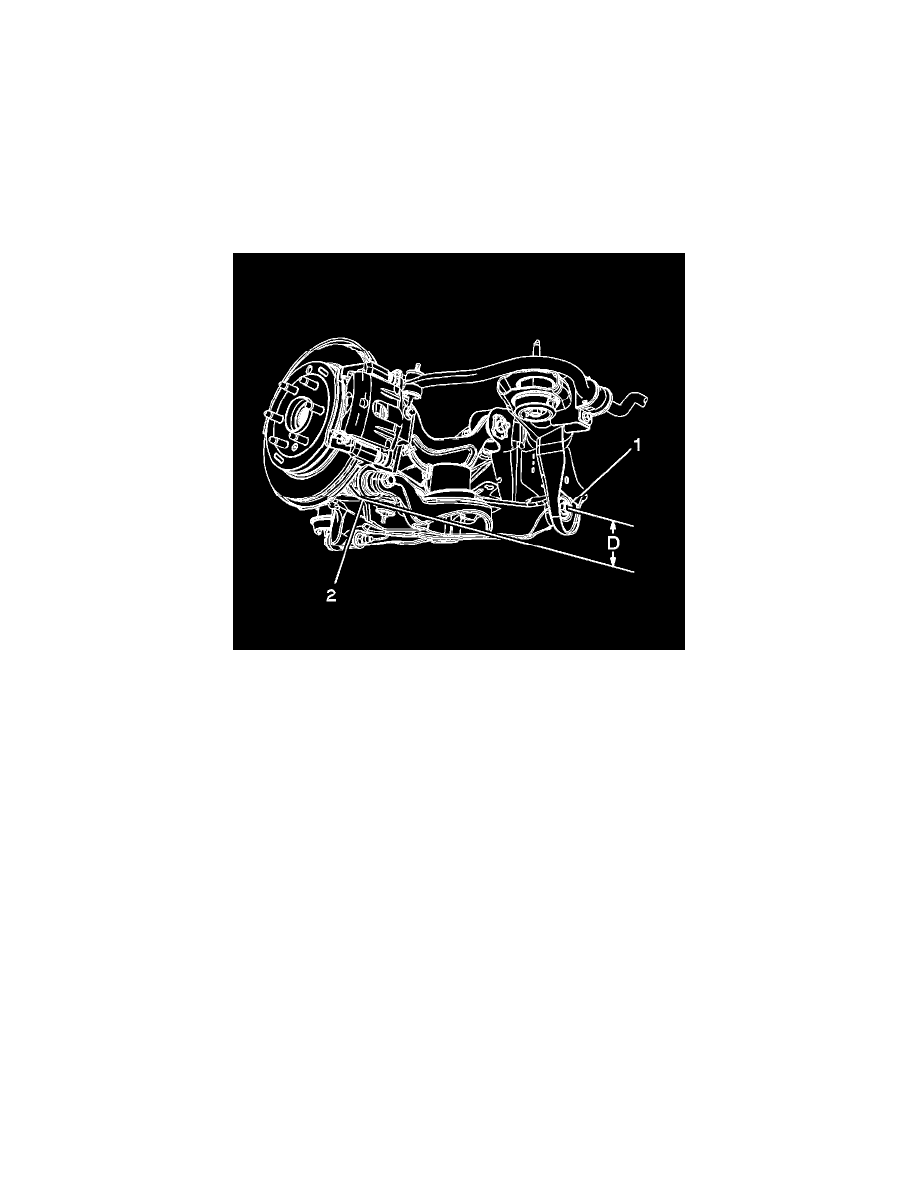Enclave AWD V6-3.6L (2009)

7. Gently remove your hands and let the vehicle settle.
8. Repeat this operation 2 more times for a total of 3 times.
9. Re-measure the Z height as in step 5.
10. The true Z height is the average of the measurements taken in steps 5 and 8. Refer to Trim Height Specifications (See:
Suspension/Specifications/Trim Height Specifications).
If any of these measurements are out of specifications, inspect for the following conditions:
*
Worn or damage suspension components
*
Collision damage
Measuring the D Height
Important:
*
In order to obtain the proper measurement, D will equal inner minus the outer.
*
The left and right D height difference should be no more than 12 mm (0.47 in).
Use the following procedure to measure the D height:
1. Lift the rear bumper of the vehicle up about 38 mm (1.5 in).
2. Gently remove your hands and let the vehicle settle.
3. Repeat this operation 2 more times for a total of 3 times.
4. Use the outer flat spot 2 on the knuckle as the reference point for the D height measurement.
5. Measure from the outer on the knuckle to the center of the lower control arm bolt (1).
6. The difference between these 2 measurements is the D height.
7. Lift the rear bumper of the vehicle up about 38 mm (1.5 in).
8. Gently remove your hands and let the vehicle settle.
9. Repeat this operation 2 more times for a total of 3 times.
10. Re-measure the D height as in step 4.
11. The true D height is the average of the measurements taken in steps 4 and 8. Refer to Trim Height Specifications (See:
Suspension/Specifications/Trim Height Specifications).
If any of these measurements are out of specifications, inspect for the following conditions:
*
Worn or damage suspension components
*
Collision damage
